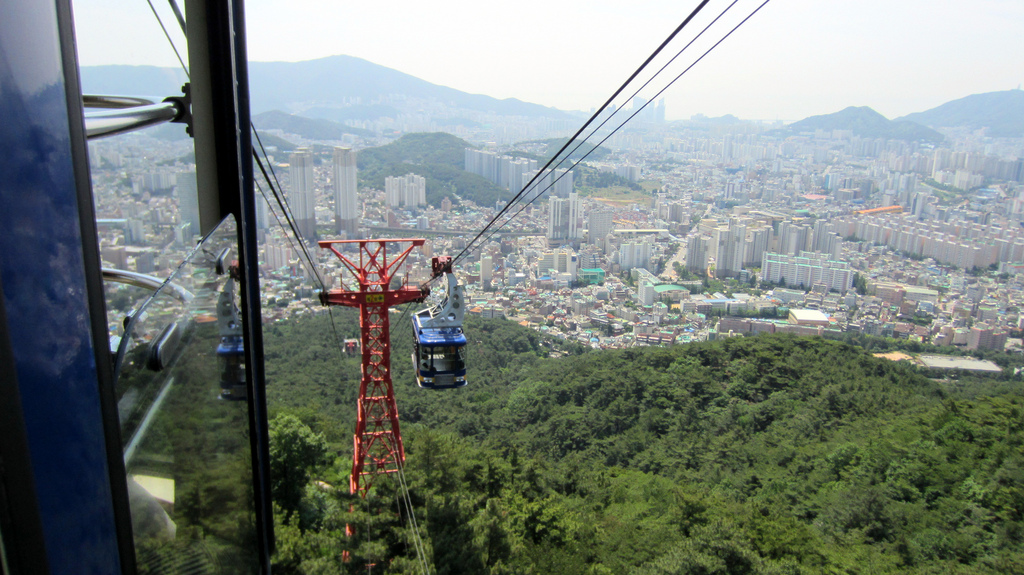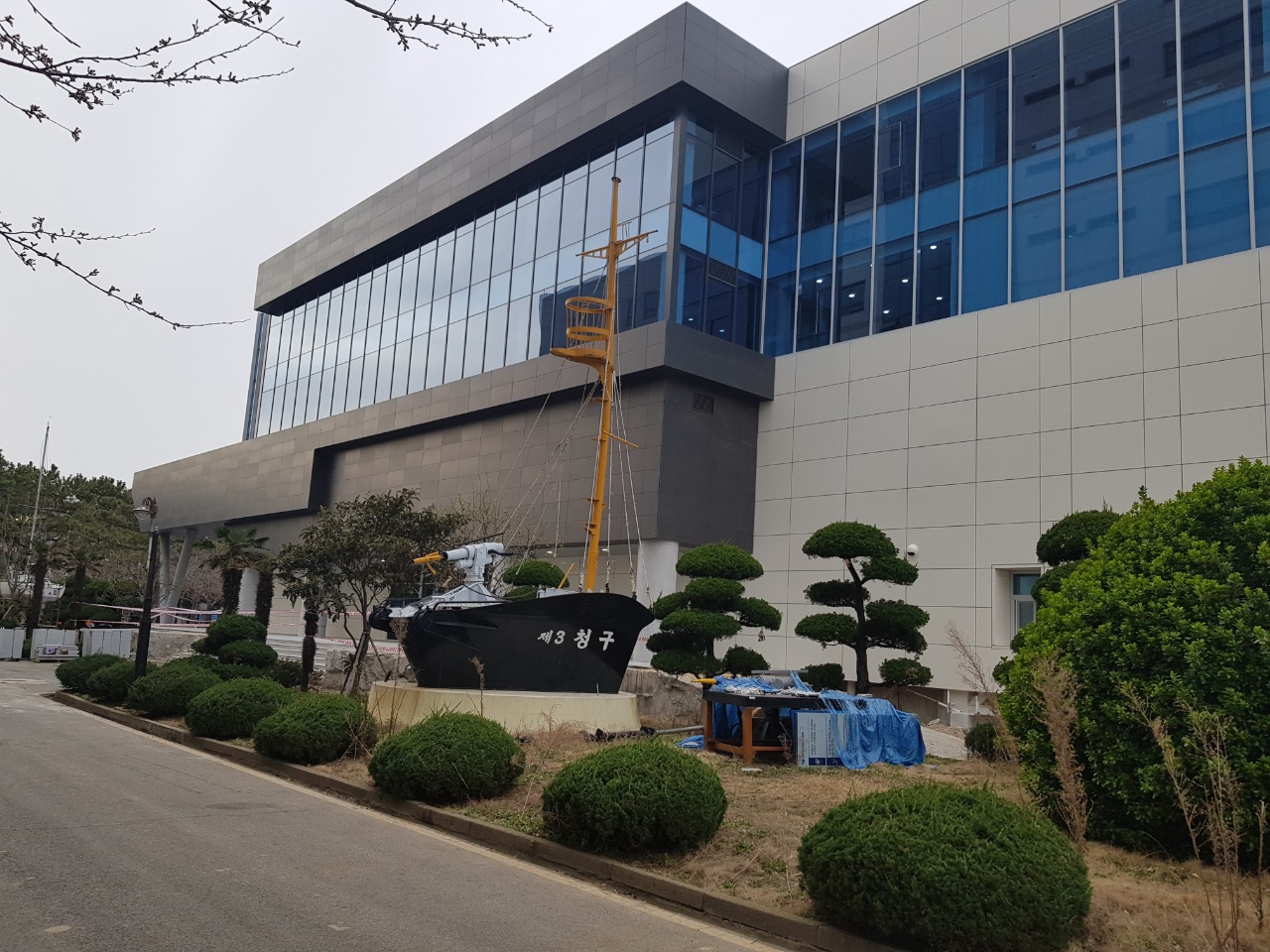|
2002 FESPIC Games
The 2002 FESPIC Games, officially known as the 8th FESPIC Games, was an Asia-Pacific disabled multi-sport event held in Busan, South Korea from 26 October to 1 November 2002, 12 days after the 2002 Asian Games. It was one of the two FESPIC Games to have held at the same host city as the Asian Games, the other being the 1999 FESPIC Games in Bangkok, Thailand. It was the first time South Korea hosted the games as it is the seventh FESPIC organisation member to host the FESPIC games after Japan, Australia, Hong Kong, Indonesia, China, Thailand. Around 2,199 athletes from 40 nations competed at the games which featured 17 sports. The games was opened by the Prime Minister of South Korea, Kim Suk-soo at the Busan Asiad Stadium. Development and preparation The Busan Fespic Games Organising Committee (BUFOC) was formed to oversee the staging of the games. Venues The 8th FESPIC Games had 16 venues for the games, 14 in Busan and 2 in South Gyeongsang. Symbols The logo of the 20 ... [...More Info...] [...Related Items...] OR: [Wikipedia] [Google] [Baidu] |
Busan
Busan (), officially known as is South Korea's most populous city after Seoul, with a population of over 3.4 million inhabitants. Formerly romanized as Pusan, it is the economic, cultural and educational center of southeastern South Korea, with its port being Korea's busiest and the sixth-busiest in the world. The surrounding "Southeastern Maritime Industrial Region" (including Ulsan, South Gyeongsang, Daegu, and some of North Gyeongsang and South Jeolla) is South Korea's largest industrial area. The large volumes of port traffic and urban population in excess of 1 million make Busan a Large-Port metropolis using the Southampton System of Port-City classification . Busan is divided into 15 major administrative districts and a single county, together housing a population of approximately 3.6 million. The full metropolitan area, the Southeastern Maritime Industrial Region, has a population of approximately 8 million. The most densely built-up areas of the city are situat ... [...More Info...] [...Related Items...] OR: [Wikipedia] [Google] [Baidu] |
Athletics Pictogram (Paralympics)
Athletics may refer to: Sports * Sport of athletics, a collection of sporting events that involve competitive running, jumping, throwing, and walking ** Track and field, a sub-category of the above sport * Athletics (physical culture), competitions based on human qualities of stamina, fitness, and skill ** College athletics, non-professional, collegiate- and university-level competitive physical sports and games Teams * Oakland Athletics, an American professional baseball team * Philadelphia Athletics (1860–76), an American professional baseball team * Philadelphia Athletics (American Association), an American professional baseball team, 1882–1890 * Philadelphia Athletics (1890–91), an American baseball team * Philadelphia Athletics (NFL), a professional American football team, 1902–1903 Other uses * Athletics (band), an American post-rock band See also * Athlete (other) * Athletic (other) * athleticism Athletics is a term encompassing the human ... [...More Info...] [...Related Items...] OR: [Wikipedia] [Google] [Baidu] |
Archery
Archery is the sport, practice, or skill of using a bow to shoot arrows.Paterson ''Encyclopaedia of Archery'' p. 17 The word comes from the Latin ''arcus'', meaning bow. Historically, archery has been used for hunting and combat. In modern times, it is mainly a competitive sport and recreational activity. A person who practices archery is typically called an archer, bowman, or toxophilite. History Origins and ancient archery The oldest known evidence of the bow and arrow comes from South African sites such as Sibudu Cave, where the remains of bone and stone arrowheads have been found dating approximately 72,000 to 60,000 years ago.Backwell L, d'Errico F, Wadley L.(2008). Middle Stone Age bone tools from the Howiesons Poort layers, Sibudu Cave, South Africa. Journal of Archaeological Science, 35:1566–1580. Backwell L, Bradfield J, Carlson KJ, Jashashvili T, Wadley L, d'Errico F.(2018). The antiquity of bow-and-arrow technology: evidence from Middle Stone Age laye ... [...More Info...] [...Related Items...] OR: [Wikipedia] [Google] [Baidu] |
Archery Pictogram (Paralympics)
Archery is the sport, practice, or skill of using a bow to shoot arrows.Paterson ''Encyclopaedia of Archery'' p. 17 The word comes from the Latin ''arcus'', meaning bow. Historically, archery has been used for hunting and combat. In modern times, it is mainly a competitive sport and recreational activity. A person who practices archery is typically called an archer, bowman, or toxophilite. History Origins and ancient archery The oldest known evidence of the bow and arrow comes from South African sites such as Sibudu Cave, where the remains of bone and stone arrowheads have been found dating approximately 72,000 to 60,000 years ago.Backwell L, d'Errico F, Wadley L.(2008). Middle Stone Age bone tools from the Howiesons Poort layers, Sibudu Cave, South Africa. Journal of Archaeological Science, 35:1566–1580. Backwell L, Bradfield J, Carlson KJ, Jashashvili T, Wadley L, d'Errico F.(2018). The antiquity of bow-and-arrow technology: evidence from Middle Stone Age layer ... [...More Info...] [...Related Items...] OR: [Wikipedia] [Google] [Baidu] |
Yangsan Gymnasium
Yangsan () is a city in Gyeongsangnam-do Province, South Korea. It borders Ulsan to the northeast, Gijang-gun and Geumjeong-gu in Busan to the southeast, Gimhae to the southwest, and Miryang to the northwest. City Hall is located in Nambu-dong, Yangsan-si. Administrative divisions Currently, Yangsan is made up of 1 Eup (administrative division), 4 Myeon (administrative division) and 8 Dong. A city flag Yangsan City means that it will open up as a future city with a bright, hopeful 21st century like magnolia, the flower of the city, and symbolizes Yangsan's strong will to build a first-class mass-production as the center of economy, society and culture in the eastern inland. Attractions * Tongdosa Temple *Naewon Temple *Yangsan Tower * Yangsan Stadium * Eden Valley Ski Resort *Hongryong Falls *Yangsan Wondong Plum Blossom Festival Climate Transportations Railways Yangsan has two stations on the Gyeongbu Line: Mulgeum station (물금역) and Wondong station (원동역 ... [...More Info...] [...Related Items...] OR: [Wikipedia] [Google] [Baidu] |
Changwon
Changwon () is the capital city of Gyeongsangnam-do, on the southeast coast of South Korea. With a population of 1.07 million , Changwon is South Korea's ninth-most populous city. A port city, Changwon is bordered by Masan Bay to the south, and the cities of Busan and Gimhae to the east. The city of Miryang lies to the northeast, and Jinju to the west. The region has been inhabited since the Bronze Age, and its urban areas have been renamed and re-organized many times throughout history. In 1974, with the creation of the Changwon National Industrial Complex, the three historically interdependent cities of Masan, Jinhae-gu, Jinhae, and Changwon began to undergo significant economic development, growing into an important industrial centre. On 1 July 2010, the cities of Changwon, Jinhae, and Masan merged to form the current city of Changwon. As Korea's first Planned community, planned city, modeled after Canberra, Australia, Changwon uses accessible urban planning including ma ... [...More Info...] [...Related Items...] OR: [Wikipedia] [Google] [Baidu] |
South Gyeongsang Province
South Gyeongsang Province ( ko, 경상남도, translit=Gyeongsangnam-do, ) is a province in the southeast of South Korea. The provincial capital is at Changwon. It is adjacent to the major metropolitan center and port of Busan. The UNESCO World Heritage Site Haeinsa, a Buddhist temple that houses the '' Tripitaka Koreana'' and tourist attraction, is located in this province. Automobile and petrochemical factories are largely concentrated along the southern part of the province, extending from Ulsan through Busan, Changwon, and Jinju. Etymology The name derives ; . The name derives from the names of the principal cities of Gyeongju () and Sangju (). History Before 1895, the area corresponding to modern-day South Gyeongsang Province was part of Gyeongsang Province, one of the Eight Provinces of Korea during the Joseon dynastic kingdom. In 1895, southern Gyeongsang was replaced by the districts of Jinju in the west and Dongnae (modern-day Busan) in the east. In 1896, they wer ... [...More Info...] [...Related Items...] OR: [Wikipedia] [Google] [Baidu] |
Pukyong National University
Pukyong National University (PKNU) is a national university in Busan, South Korea, formed in 1996. The university has two campuses, Daeyeon-dong and Yongdang-dong, situated near the coastal district of Nam-gu. PKNU has a traditional focus on fisheries sciences and other maritime fields, and has extensive facilities for Marine and Technology studies. The school's symbol mascot is anthropomorphic Moby Dick, "Baek Kyung-i". The school name was changed through a vote in August 2021. History PKNU was formed in 1996 from the merger of two national universities with long histories, the National Fisheries University of Busan, established in 1941, and the Busan National University of Technology, which was established in 1924. Historically, Daeyeon-dong was a small fishing village populated by anchovy fishermen. In the early years of the 20th century these fishermen found their products in high demand and they became quite wealthy. They used the money to purchase what is now the Daey ... [...More Info...] [...Related Items...] OR: [Wikipedia] [Google] [Baidu] |
Dongju College
Dongju College is a private technical college in Busan, South Korea. About 110 instructors are employed. Academics Dongju College offers instruction in the fields of health and social welfare, hotel and tourism management, early childhood education, information technology, and design. History The college was opened in 1978 as Dongju Women's Vocational School (동주여자실업전문학교), with 480 students. It became a technical college in 1981. Notable people * Song Seon-mi, actress See also *List of colleges and universities in South Korea *Education in South Korea Education in South Korea is provided by both public schools and private schools. Both types of schools receive funding from the government, although the amount that the private schools receive is less than the amount of the state schools. South ... External linksOfficial school website, in Korean [...More Info...] [...Related Items...] OR: [Wikipedia] [Google] [Baidu] |
Gijang Gymnasium
Gijang County is a ''gun'', or county, located between Haeundae-gu and Ulsan in northern Busan, South Korea. History Gijang first appears under its current name in the annals of the year 757, during the Unified Silla period. At that time it was made the ''hyeon'' of Gijang, part of Dongnae-gun. The ''Samguk Sagi'' records that it was known as Gaphwayanggok () previously. Historical landmarks in the county include the Buddhist temple of Jangansa, said to have been first built by Wonhyo in the 7th century. Geography and demographics Gijang is the most rural of Busan's districts, and consists mostly of vacant and agricultural land. Approximately 156.7 of its 217.9 square kilometers are empty and forested, mostly hilly land. The county's population has risen steadily since 1990, when it stood at 56,847. There is a fishing village set along the coastline. Economy Due to its location along the coast of the Sea of Japan, Gijang is known as a center for the production of vario ... [...More Info...] [...Related Items...] OR: [Wikipedia] [Google] [Baidu] |






